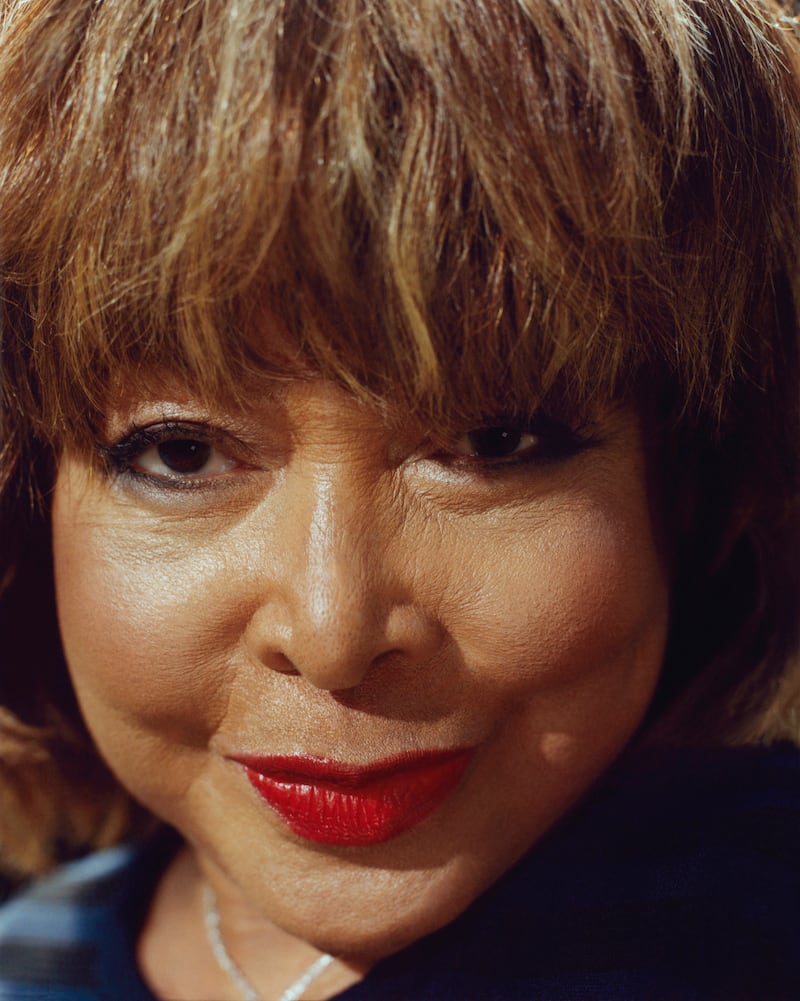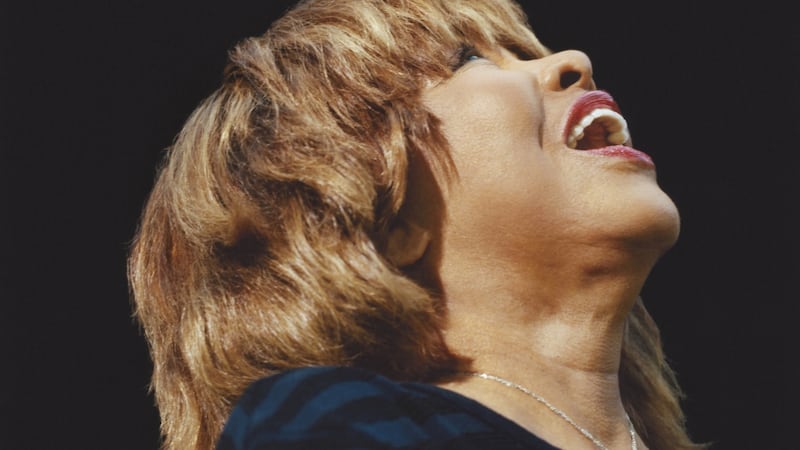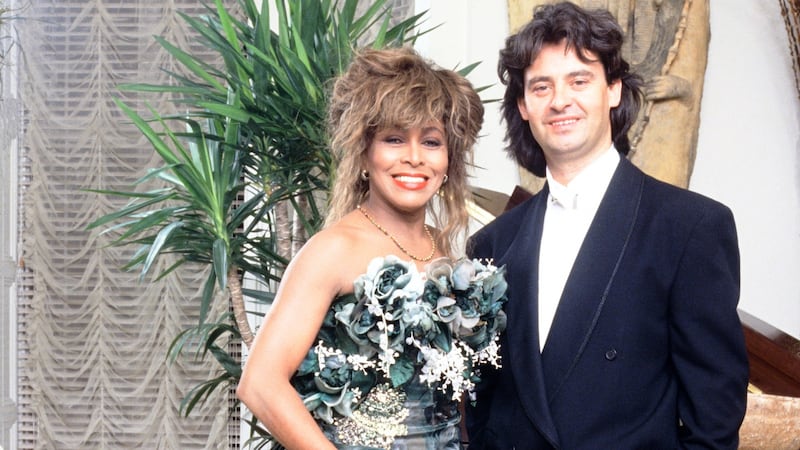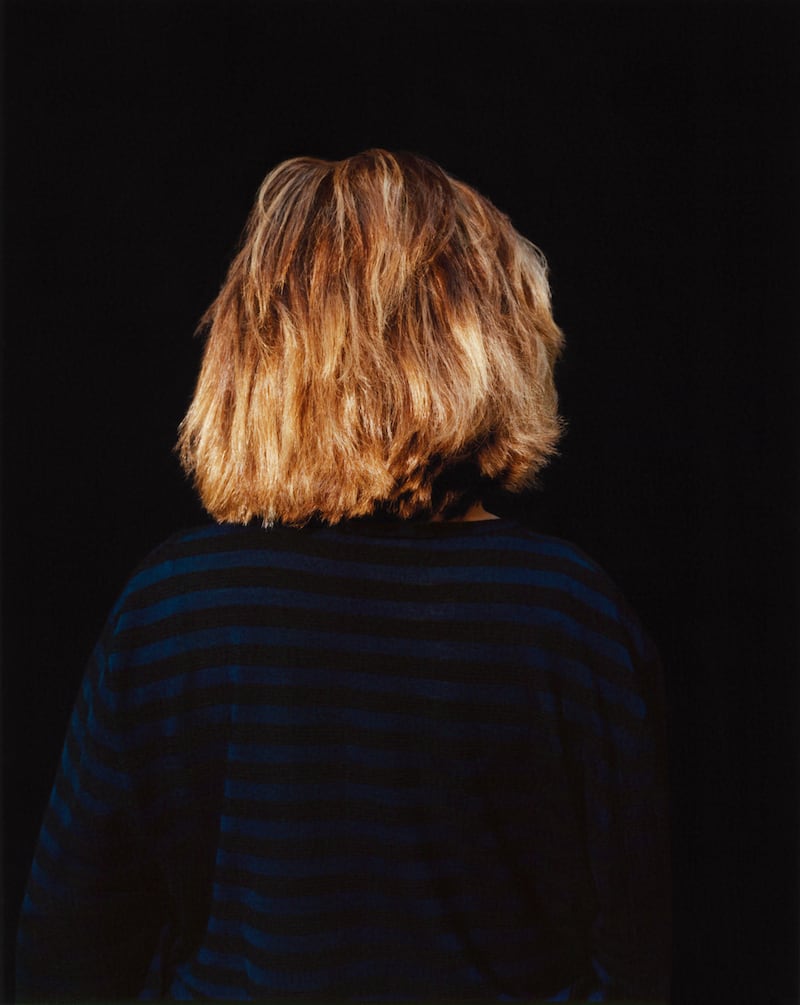There is a metal plaque on the gate to Tina Turner’s estate in Küsnacht, Switzerland, that says “Vor 12.00 Uhr nicht läuten, keine Lieferungen”, which I believe is German for “Do not even think about bothering Tina Turner before noon”.
She was the symbol of rock'n'roll stamina for 50 years. Her version of Proud Mary was 175 per cent longer than the original, and John Fogerty didn't even dance. She became a star with Ike Turner in her 20s, escaped his abuse in her 30s, fought her way up the pop charts in her 40s, toured the world through her 60s, and now she would like to sleep in.
So I arrived at two in the afternoon. Erwin Bach, Turner's German husband, fetched me in his SUV and delivered me to the house, which is named – did you think Tina Turner's house would not have a name? – the Chateau Algonquin. It has cartoon palace energy: ivy snaking up the walls, gardeners manicuring the shrubs, a life-size two-legged horse sculpture suspended from a domed ceiling, a framed rendering of Turner as an Egyptian queen, a room stuffed with gilded Louis XIV style sofas and, sprawled on one of them, Tina Turner herself.
Turner is 79 years old. She has been retired for 10 years and she is still basking in all of the nothing she has to do.
“I don’t sing. I don’t dance. I don’t dress up,” she told me. Even her wig – “a critical part of the Tina Turner look”, as she wrote in her recent memoir – has relaxed from its formerly perpendicular posture into a saucy shag. Her voice is as beguiling as ever, though it is now employed for different means. She slips into a rich continental accent when she calls for her husband, and she dives into her low, trembling rasp – “not the voice of a woman”, as she has put it – when she teases him.

She does not miss performing. Oh, no. Even in 2009, as she romped around the world on the final dates of the Tina! 50th Anniversary tour, she was fantasising, to be honest, about redecorating her house. She lived that life with Ike, and then she conquered that life with a life of her own, and now it was time to take in her unobstructed view of Lake Zurich.
“I was just tired of singing and making everybody happy,” she said. “That’s all I’d ever done in my life.”
Once in a while, though, she will be in the car. The radio will come on, and with Bach humming respectfully beside her, she will give the song the full Tina Turner treatment, bouncing in her seat and purring for an audience of one. There is a song that she can’t resist. “Oh, what’s his name?” she called to her husband, who was puttering around in the next room. “Darling? What’s his name?” And then she did sing: “ I want something just liiiike this! ”
Bach called: “The song is by Coldplay!”
“Coldplay,” Turner repeated. “You know what I like?” She began to rhapsodise on the counterintuitive appeal of Chris Martin’s voice. “He doesn’t have that really good black voice, like Motown –”
“ – The song is called Coldplay with the Chainsmokers!’” Bach called.
“It doesn’t maaatter!” she called back, as if she had summoned her full vocal powers to banish the very idea of whatever a Chainsmoker is from the face of the Earth. She shot me a sly look. “It’s Coldplay,” she said.
Tina watching Tina
Turner may not be singing much these days, but there’s a squad of Tinas performing around the world on her behalf. Tina: The Tina Turner Musical, based on her life and scored with her hits, has brought a Tina to London and a Tina to Hamburg, Germany. Soon it will bring a Tina to Broadway, when the $16.5 million production begins performances at the Lunt-Fontanne Theatre next month, with Adrienne Warren in the wig.
Directed by Phyllida Lloyd (Mamma Mia!), the show covers four decades of Turner’s life, beginning when she was little Anna Mae Bullock in Nutbush, Tennessee, and hopscotching through the 1980s, when she grew into the fiercest pop star on the planet.
Turner consulted closely on the musical, showing the choreographer her moves and sharing her recollections with the writers. When she met Warren in London, she administered a little quiz.
Lounging on a couch, the actress standing expectantly before her, Turner asked, “Can you do the Pony? Do it a little bit.” Warren bounced enthusiastically up and down. “That?” she asked, to which Turner replied: “No.”
And so Turner rose, paused her retirement just long enough to correctly execute her signature move, and then collapsed laughing on to the couch, gleefully kicking her Louboutin flats into the air.
I asked her if it’s strange to watch these other women pretend to be her, and she said that she has spent her whole career watching other women pretend to be her.
She used to audition promising background singers for the Ike & Tina Turner Revue and say: “She’ll make a good Tina.” Later, when she started to see young pop starlets arise in her mold, she would look them over and say: “She’ll make a good Tina.” And when her record company told her that Beyoncé had released a song that referenced her – Drunk in Love, on which Jay-Z crudely boasts of his resemblance to Ike – Turner’s response was, “Yeah, I’m not surprised.”
He owned her
It’s revisiting her life itself that is hard. The musical traces her triumphant rise as a solo artist and her budding romance with Bach, but first it tears through the 16 years she spent with Ike. She met him when he was a swaggering St Louis bandleader and she was 17-year-old Anna Mae. He gave her a break as a performer, but by the end, he had almost made her hate music. He changed her name, and then he trademarked it, and then he owned her. He stole her earnings. He threw hot coffee in her face. He broke her jaw. Through it all he made her sing, even if blood was running down her throat.
It is difficult to neatly fictionalise that kind of physical and psychological violence. When Disney began to make What’s Love Got to Do With It, the 1993 biopic based on Turner’s life, Laurence Fishburne would not agree to play Ike until his “cardboard cutout” villain character was deepened. The climax of the stage musical shows Tina Turner triumphantly hitting Ike back before running to freedom; in real life, she did hit him back, but then she rubbed his temples until he fell asleep; only then did she feel safe enough to sneak away.
To this day, Turner has never revealed the full extent of his abuse. “I think I’m ashamed,” she said. “I feel I told enough.”

I don't necessarily want to be a 'strong' person
She first documented the violence in her 1986 book I, Tina, and it was then that her public persona began to evolve from popular singer to living legend. Suddenly, “You’re not just a star onstage with the hair and the legs,” she said. “You had a life. You had a tough life.” But once she had said it, she was forced to retell the story again and again. It felt like every time her friend Oprah interviewed her, she would ask, “Do you remember the first time Ike hit you?” When What’s Love Got to Do With It came out, Turner didn’t watch it. She didn’t need to relive that nightmare.
But last year, when Tina the musical debuted in London, there she was, sitting in the best seat in the house. And as she watched her story unfold once more, she found herself laughing. At the curtain call, she walked onstage and assured the actor who played Ike: “I forgive you.” Some took that to mean that she had forgiven Ike Turner himself, which she had not.
“I don’t know if I could ever forgive all that Ike ever did to me,” she said, but “Ike’s dead.” Turner laughed. “So we don’t have to worry about him.”
He calls her ‘Schatzi’
When Turner finally escaped Ike in 1976, she left with just 36 cents in her pocket. Her head was so swollen from the beatings, she had to leave even her wig behind. And she was in debt. All the venues for all the cancelled Ike & Tina Turner Revue shows were calling, and they weren’t interested in launching the solo career of a 37-year-old single black woman. She went on US game show Hollywood Squares, and the host, Peter Marshall, introduced her by saying, “Tina, where’s Ike?”
By the time she was fully and properly respected in America as a solo artist, Turner was already gone. She wanted to put an ocean between herself and Ike. Besides, she was done with American guys. In those years, she skipped across Europe, sampling a continental buffet: She enjoyed flirtations with a Dutchman, an Italian, a Greek. She loved the way Europeans said her name. Ike always said it like “Tee-nuh,” but here it was “Tee-nah.”
She went to London to record her 1984 comeback album, Private Dancer –which features Steel Claw by Irish singer-songwriter Paul Brady – and she shot the cover for her 1990 single, Foreign Affair, literally hanging off the Eiffel Tower, Paris at her feet. She began to believe that she might have been French in another life. Nobody there ever asked her where Ike was.

She had just flown into Cologne, Germany, when she saw him. An A&R man for her record company, EMI, emerged from behind a column in a jaunty windbreaker, like some kind of German-boyfriend-ex-machina. She loved his eyes. She loved his nose. “Didn’t like his hairstyle,” she told me, but she figured she could redecorate that, too.
The instant attraction was not mutual. Bach says that, as a music industry professional, he would never even have considered fraternising with an artist. “But also I was bushed,” Turner added. “I didn’t look too good.” So later that night, at a business dinner where she had made sure to look extra fine, she mischievously requested every last record company executive’s date of birth and then researched Bach’s full astrological profile. (“He’s an Aquarius, thank God. Ike, obviously, was a Scorpio”). Then, when the Cristal was flowing, she turned to him and said, “I want you to make love to me.”
She was 46 and he was 30. The press called him her “boy toy.” But here they are, more than 30 years later, and his silver hair is slicked back in a Tina-Turner-pleasing formation. He calls her “Bärli” (German for little bear) and “Schatzi” (sweetheart) and will under no circumstances reveal what her nickname is for him. Whenever he talks too much, Turner raises a hand in the air and cinches her fingers together in the style of D. Evil, and he quiets.
He knows that his wife is a star and he is not, and he feels that it is very important to honour that distinction. The Erwin character in the show woos Tina, and while the real Erwin doesn’t recognise himself in the role, he says matter-of-factly: “The musical is done by professionals under the guidance of Tina, and they decide how the characters look.”
Several years ago, when Turner was on dialysis and close to death, her husband gave her a kidney. “And I would do it again,” he said, to which she replied: “Well, I might need another one on the other side.” Turner may have laughed through the musical, but Bach cried.

Inside the chateau
The couple moved to Switzerland in 1995. After a chaotic life, Turner likes the Swiss zeal for order. Everything here runs according to the rules. She does not speak German, which, actually, she prefers; it means she’s not expected to say much. If someone says something amusing, she can just ask her husband what it was.
On a typical day, she gets up. Her major-domo, Didier, an enormously tall Swiss man with a bright polo shirt buttoned all the way to his shy face, makes her some oatmeal. She shops.
The Algonquin is overflowing with beautiful things: a pair of novelty castle keys (“I really wanted a castle until I saw how big castles were,” she said); pieces of an enormous shattered amethyst arranged by the in-ground swimming pool (“It was a gift”); framed photographs of the sarcophagi of old Egyptian royalty (she senses she was one of them in a past life; Didier was there, too); a sword-wielding pre-Colombian idol she picked up just as she was leaving America for good (“I liked him, at the time”). Nothing is in storage: Now that she can afford it, “I want to see it,” she said.
When Turner was with Ike, she had no space of her own. She changed the towels in the bathroom once, and he screamed at her. She hid her Buddhist prayer cabinet in a spare room, and when he discovered it, he ordered it out of the house. One day she returned home from a hospital stay to find that he had totally remodelled the place in his vulgar style. Thirty years later, Mike Wallace visited Anna Fleur, Turner’s villa in the south of France, and he asked her: “Do you feel like you deserve all this?” To which she replied: “I deserve more.”
Now she has the Chateau Algonquin, where she is in total control of her physical surroundings, and she revels in them. The only hitch is that she does not actually own the chateau. Her landlord, Kaspar, lives in her attic and controls the boathouse, which stands un-Tina-fied at the shore of the lake.
She led me on a tour of the grounds, holding my arm in hers, and as we paused beneath her covered patio, she gazed wistfully at the boathouse. “I’m looking forward to decorating that,” she said.
‘I just kept going’
Tina Turner has become a symbol of so many things – sex appeal, resilience, empowerment – that she cannot quite relate to. She was never trying to be sexy onstage; she was sweating through her clothes to sell her songs. And the idea of connecting her life to the feminist movement or recasting it through #MeToo feels alien to her. “I identify only with my life,” she said. While everyone was making her into a symbol, “I was busy doing it. Doing the work.”
The strength of her voice, and the power of her story, have seemed to build an almost invincible persona, but it’s just a persona. “I don’t necessarily want to be a ‘strong’ person,” she said. “I had a terrible life. I just kept going. You just keep going, and you hope that something will come.” She gestured around her. “This came.”

When Turner got tired of talking about herself, I left her. I returned the following afternoon to find her transformed: wig styled, lips painted red, eyes sparkling. “That was Anna Mae yesterday,” she told me. “Here’s Tina.”
Turner was having her photo taken that day. A makeshift studio had been erected on her lawn. She had draped herself in luxury accessories, which she listed aloud: Cartier. Bulgari. And “who’s the one with the red bottoms, darling?” Louboutin.
Despite her protestations – “I don’t sing, I don’t dance, I don’t dress up” – when the camera came out, she turned on. She was pouting. She was squatting. She was throwing her head back in ecstasy. A portable stereo was on hand, and the photographer selected some other diva to set the mood.
No, she said. Put on Coldplay. – New York Times












